Japanese Hairstyles: What Makes Them Unique?
James Lau
Posted on June 25, 2024
Share:
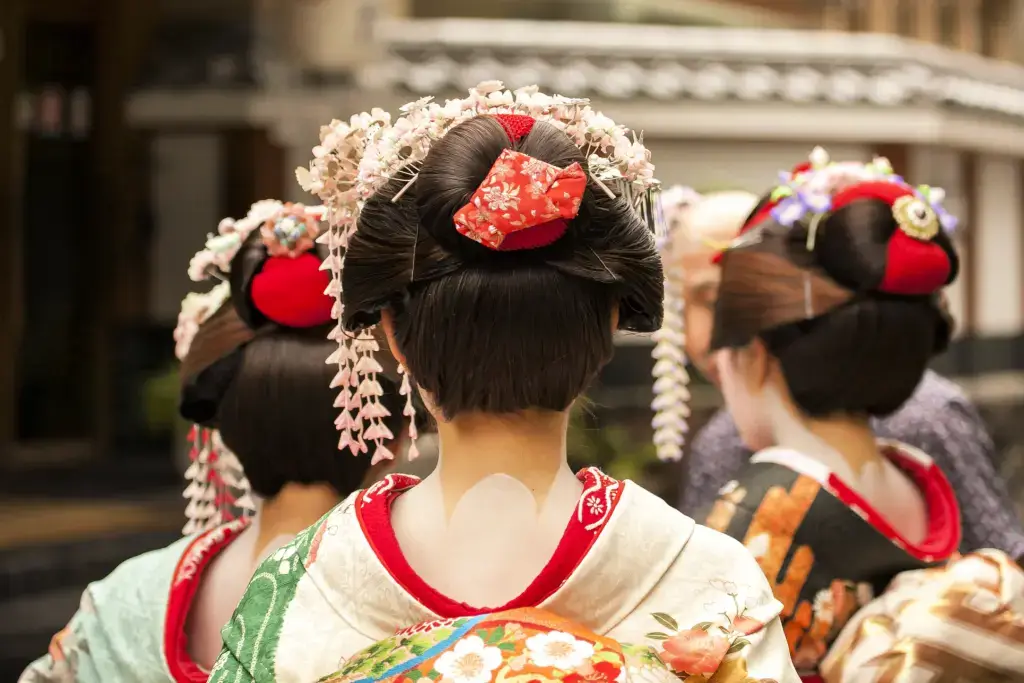
Period dramas and history manga often feature Nihongami, traditional Japanese hairstyles. These styles shaped beauty standards from the Heian to Edo periods and once represented status. So, let’s learn about these beautiful designs and their historical significance, which inspire fashion today.
What are Nihongami?
Nihongami, which means “Japanese hair,” refers to traditional hairstyles from the Kofun period (250-538) to the early Showa period (1926-1989). These hairstyles evolved through different eras, reflecting cultural shifts and status. In the Heian period (794-1185), noblewomen wore long, straight hair, a style depicted in The Tale of Genji. By the Edo period (1603-1868), hairstyles became more elaborate, with merchants and their wives driving fashion trends.

The Meiji Restoration (1868) brought Western influences, leading men to abandon traditional topknots for shorter cuts while women slowly modernized their hairstyles. Though traditional Nihongami styles were gone by the Showa period, their influence remains. Modern Japanese fashion continues to innovate, blending traditional elements with contemporary trends. Let’s take a look at some of these nihongami hairstyles!
Suberakashi
Suberakashi, or “hanging hair,” was the hairstyle of Heian noblewomen. People recognized it for its long, straight black hair, symbolizing elegance and nobility. As Japan transitioned through the Kamakura (1185-1333), Muromachi (1336-1573), and Azuchi-Momoyama (1574-1600) periods, they created hairstyles like “sagegami” (single ponytail) and “tamagusubi” (looped ponytail) for everyday activities. These styles evolved into various forms by the Edo period).
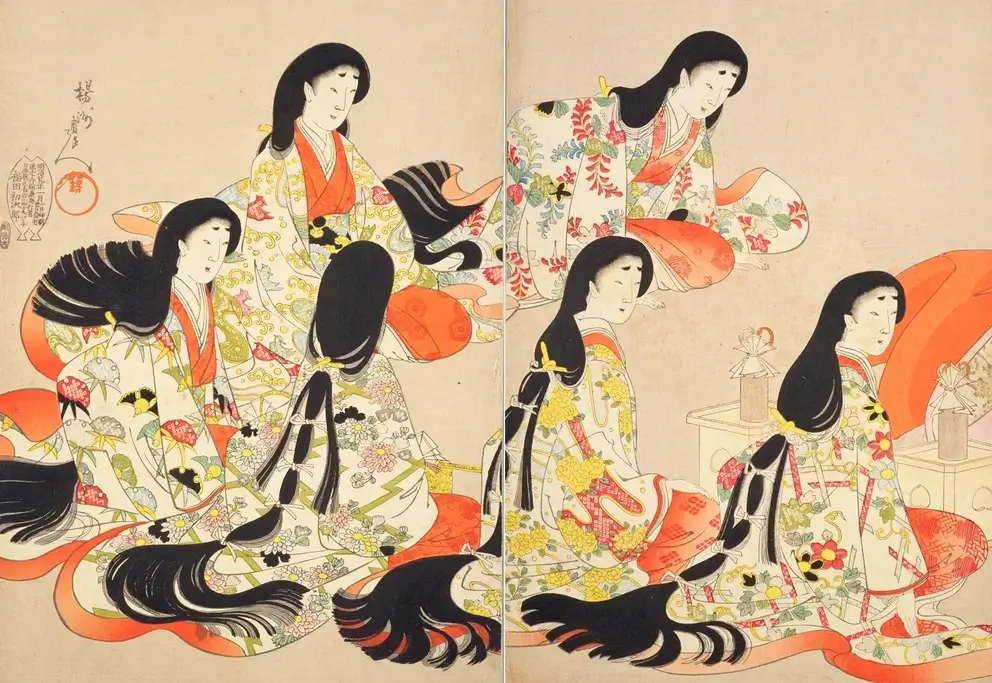
The natural “suberakashi” style evolved into the formal court hairstyle known as Osuberakashi, where people tied and bound their hair with stiff rice paper mizuhiki cords. This style remained common until the early Edo period. It also remains in ceremonial use today, worn with a junihitoe, a twelve-layered ceremonial kimono by female imperial family members and brides, maintaining its traditional elegance.
Chonmage
Chonmage was a traditional Edo period hairstyle for men, involving shaving the front and top of the head and tying the remaining hair into a topknot. While often a term for all Edo topknots, “chonmage” refers explicitly to styles for older men with less hair, distinct from the more common ginkgo leaf topknot. This hairstyle can be seen in modern sumo wrestling, where higher-ranking wrestlers wear the formal oichomage during matches.
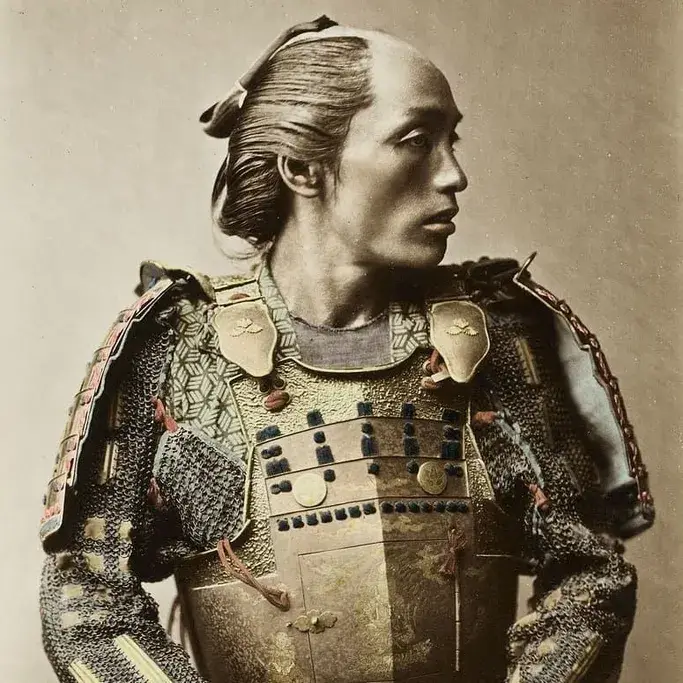
The “Cut Hair and Stop Wearing Swords” order of 1871 and Emperor Meiji’s adoption of a cropped hairstyle in 1873 marked a significant shift, leading to a decline in traditional chonmage and a rise in Western styles. Despite this, some men clung to their chonmage out of pride. Folk songs from the era also reflect the changing attitudes toward these hairstyles, telling the story of the cultural shift from traditional to modern grooming practices.
Are you looking for amazing snacks while studying historical Japanese beauty trends? Check out Sakuraco! Sakuraco delivers traditional Japanese snacks, teas, and sweets from local Japanese makers directly to your door so you can enjoy the latest delicacies directly from Japan!
Shimadamage
Shimada-mage was a famous traditional Japanese hairstyle for women, particularly among unmarried women. The natural “suberakashi” style evolved into the formal court hairstyle known as Osuberakashi, where people tied and bound their hair with stiff rice paper mizuhiki cords. This style remained common until the early Edo period. Therefore, each style reflects regional, social, and personal preferences.
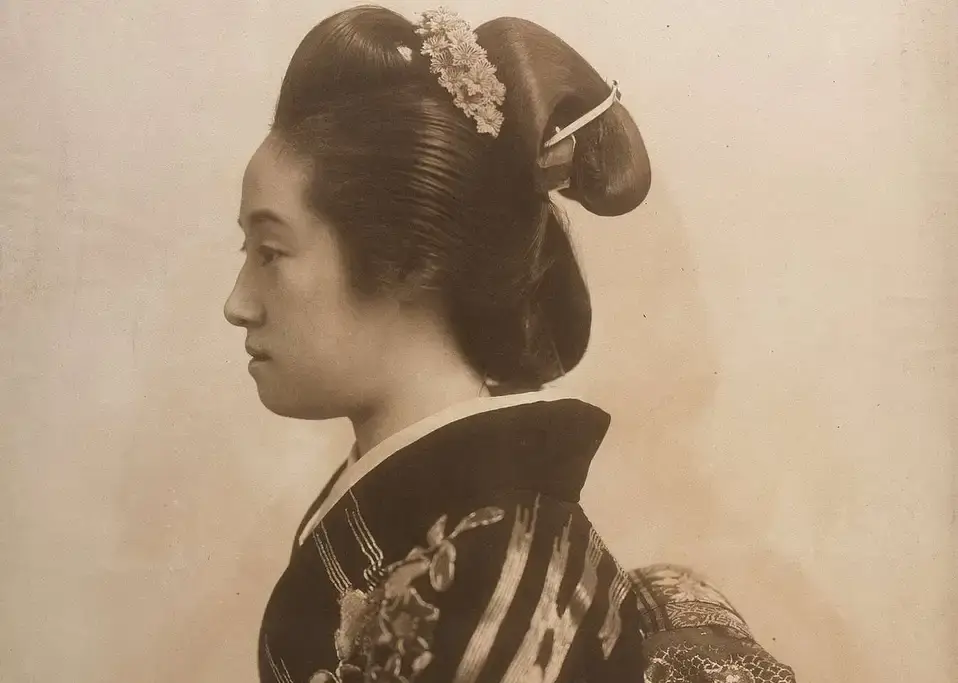
The style was adapted from the “Wakashu-mage” hairstyle for boys and young men. It quickly spread among women of all classes, resulting in numerous variations. Samurai daughters wore the elegant “Takashimada,” while courtesans and geishas preferred the “Nage Shimada” and “Tsubushi Shimada,” using the hairstyle’s adaptability and visual appeal. Today, people celebrate hairstyles in Shimada City during the Shimada-mage Festival.
Yoko-Hyogo
Yoko-hyogo, a popular hairstyle among high-class courtesans, features thick front hair and wide side locks, creating a butterfly-like appearance. This style, developed from the upright Hyogo-mage, used a unique tsuzumi tool for shaping. The courtesans decorated their hair with luxurious materials like gold, silver, and tortoiseshell, often wearing multiple layered combs and over ten hairpins.
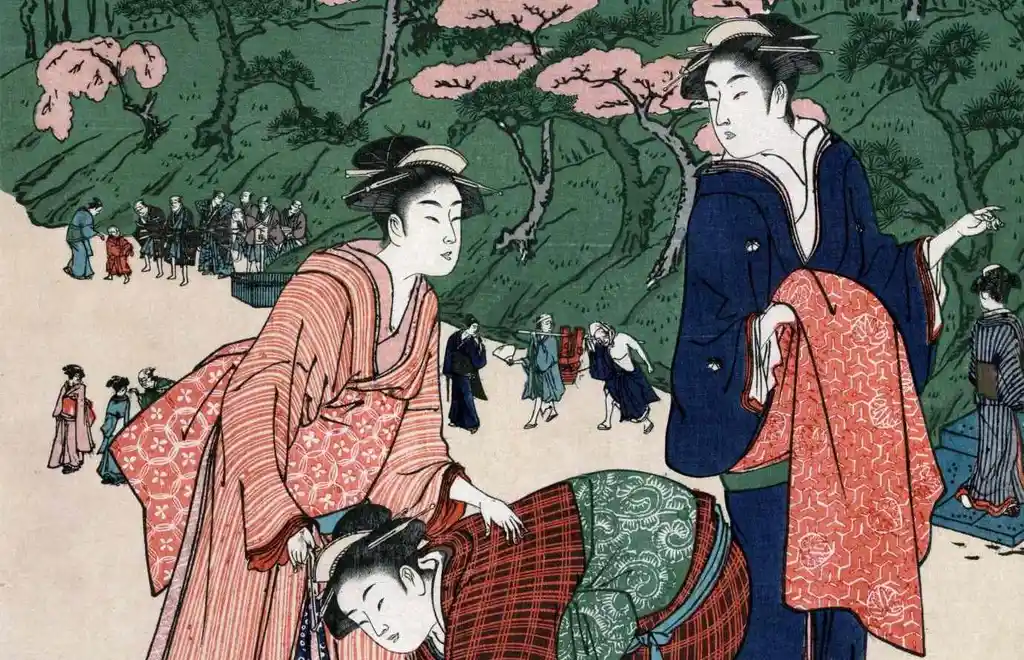
Beyond their intricate hairstyles, courtesans were admired for their education, artistic skills, and confidence. The Yoko-hyogo hairstyle and makeup trends, such as the green-tinted “Sasa-irobeni” lips, influenced Edo’s fashion scene. These elements of courtesan culture highlighted their sophistication and class and left a powerful impact on Japanese beauty standards.
Marumage
During the Edo period, women’s hairstyles signified their social status, age, and life stage. Young girls wore chigo-mage, unmarried women wore Shimada-mage, and married women adopted maru-mage. The maru-mage, a rounded and thick bun, indicated age, with more giant buns for younger women. Hair decorations also varied by age, making identifying a woman’s marital status and age easy.
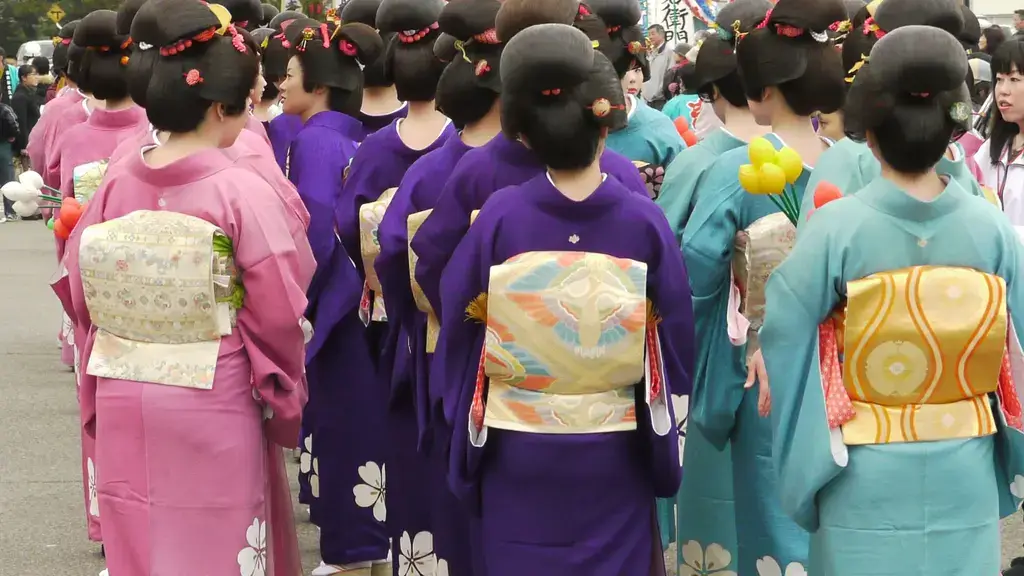
The maru-mage also became a representative hairstyle for married women from the Edo to Meiji periods (1868-1912), evolving from the Katsuyama-mage. By the late Edo period, paper forms helped maintain their shape. Although rarely seen today, maru-mage appears in traditional festivals, Kabuki, and historical dramas. Notable maru-mage events include the Maru-mage Festival in Himi City and the Yomemimatsuri in Konan City.
Why are these traditional Japanese hairstyles important?
Nihongami hairstyles are important because they have influenced Japanese beauty standards and continue to do so! From the elegance of suberakashi to the refined yoko-hyogo, you can still see some of these hairstyles today! Embracing the charm of these traditional hairstyles connects us to Japan’s past and influences modern fashion and beauty trends, proving that the importance of Nihongami continues! Have you ever seen any of these hairstyles before? Have you ever tried them? Let us know in the comments below!

Discover authentic flavors with Sakuraco
Get Sakuraco 

Discover authentic flavors with Sakuraco
Get Sakuraco 
Related Articles

Mochi: How is Mochitsuki Made in Japan?
Mochitsuki is the Japanese tradition of pounding steamed rice to make mochi for the New Year. Families and neighbors gather to participate in this lively and meaningful tradition. The teamwork involved helps everyone feel a sense of connection.

Konpeito Candy: What Makes This Starry Treat Shine?
If you are a fan of the famous Demon Slayer series, then you probably know that the favorite treat of the adorable Nezuko Kamado is those tiny, colorful little sweets.

Kinako: The Amazing Roasted Soybean Powder!
Kinako is a very popular ingredient that can easily be found in many traditional Japanese sweets. It has a distinctive flavor, standing alongside other classic tastes such as red bean or sesame. Let’s explore this charming ingredient together, and who knows, you might even be able to make it in your own beloved kitchen!

Aaron and Claire Make the Ultimate Japanese Pork Belly: Buta no Kakuni
If you want a Japanese dish that’s rich, tender, and simple to follow, Aaron and Claire show exactly how to make it in this episode. Aaron prepares Buta no Kakuni, a classic braised pork belly dish renowned for its rich flavor and tender texture.



